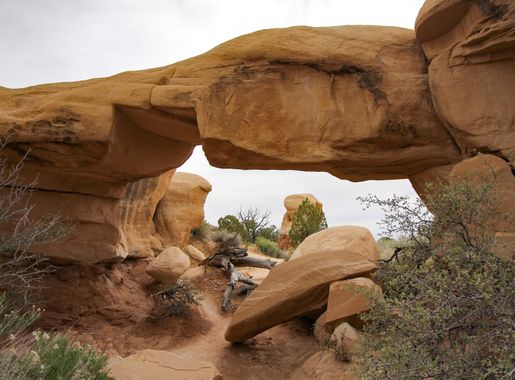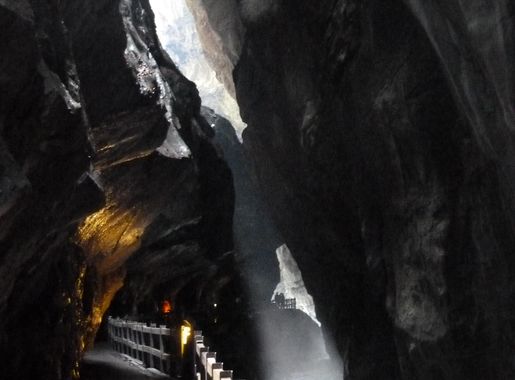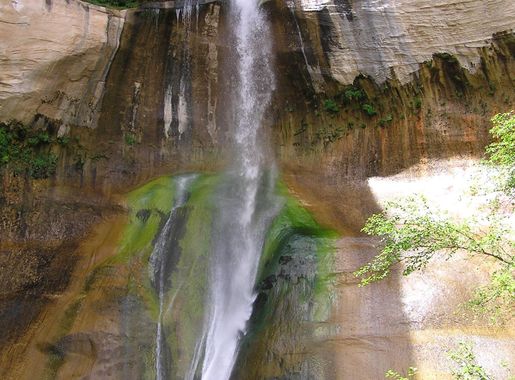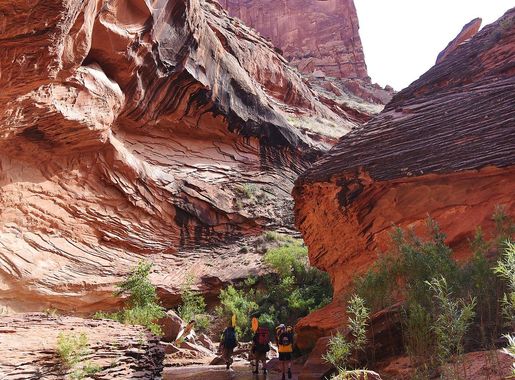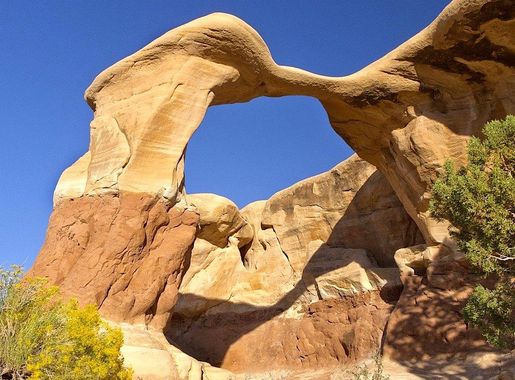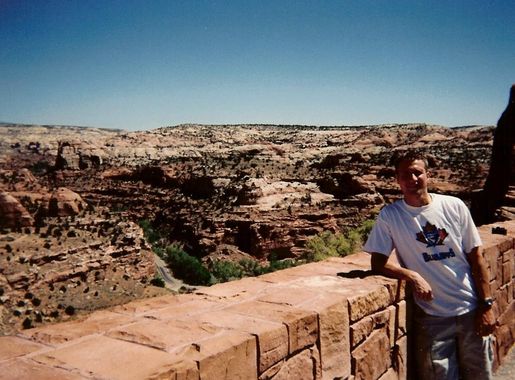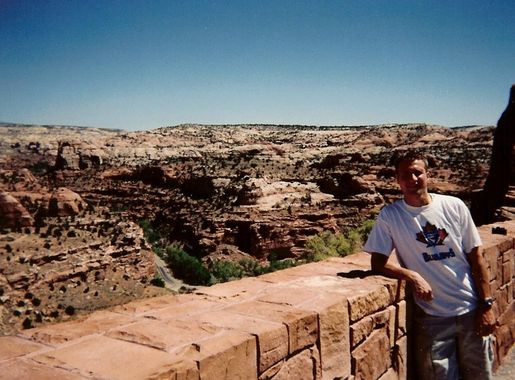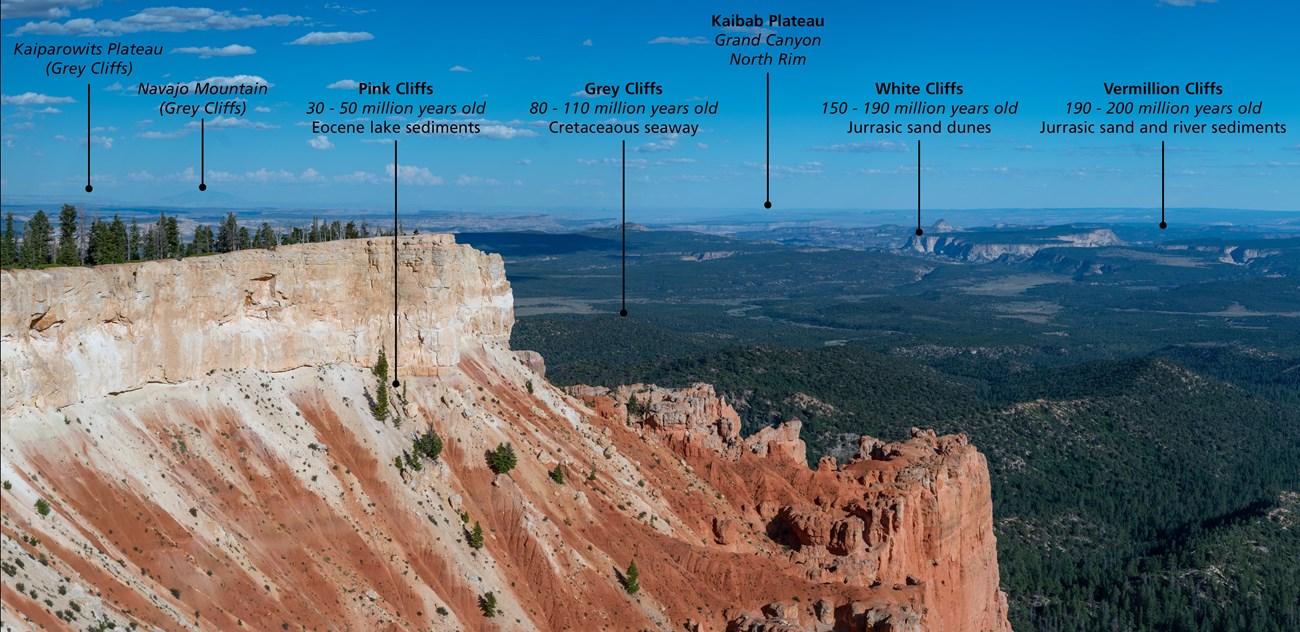
Grand Staircase-Escalante: A Journey Through Time and Nature
Explore the awe-inspiring landscapes and rich history of Grand Staircase-Escalante National Monument, a natural wonder in southern Utah's rugged wilderness.
Nestled in the heart of southern Utah, the Grand Staircase-Escalante National Monument is a treasure trove of natural beauty and ancient history. The monument spans nearly 1.9 million acres of unspoiled land, offering visitors a chance to explore rugged canyons, towering cliffs, and mysterious slot canyons. The landscape is a vivid display of geological formations, with layers of rock that tell the story of Earth's history stretching back millions of years. Whether you're an avid hiker, a passionate photographer, or a curious explorer, Grand Staircase-Escalante has something for everyone. The monument boasts numerous trails that cater to different skill levels, from easy walks along scenic overlooks to challenging hikes that take you deep into the wilderness. Popular spots include the Calf Creek Falls, a stunning 126-foot waterfall, and the Peek-a-Boo and Spooky Gulch slot canyons, which offer an adventurous experience navigating through narrow passages and climbing over rock obstacles. In addition to its natural wonders, Grand Staircase-Escalante is rich in cultural and archaeological significance. The area is home to many ancient Native American sites, including petroglyphs and ruins, providing a glimpse into the lives of the people who once inhabited this land. As you explore, you might also encounter a diverse array of wildlife, from mule deer and mountain lions to various bird species, adding to the sense of adventure and discovery. Whether you're visiting for a day or planning an extended stay, Grand Staircase-Escalante National Monument promises an unforgettable experience marked by breathtaking scenery, fascinating history, and endless opportunities for outdoor recreation.
Local tips in Grand Staircase-Escalante National Monument
- Visit in the spring or fall for the best weather and fewer crowds.
- Bring plenty of water and snacks, as amenities are limited.
- Wear sturdy hiking boots and be prepared for uneven terrain.
- Check the weather forecast and trail conditions before heading out.
- Respect the environment and follow Leave No Trace principles.
Grand Staircase-Escalante: A Journey Through Time and Nature
Nestled in the heart of southern Utah, the Grand Staircase-Escalante National Monument is a treasure trove of natural beauty and ancient history. The monument spans nearly 1.9 million acres of unspoiled land, offering visitors a chance to explore rugged canyons, towering cliffs, and mysterious slot canyons. The landscape is a vivid display of geological formations, with layers of rock that tell the story of Earth's history stretching back millions of years. Whether you're an avid hiker, a passionate photographer, or a curious explorer, Grand Staircase-Escalante has something for everyone. The monument boasts numerous trails that cater to different skill levels, from easy walks along scenic overlooks to challenging hikes that take you deep into the wilderness. Popular spots include the Calf Creek Falls, a stunning 126-foot waterfall, and the Peek-a-Boo and Spooky Gulch slot canyons, which offer an adventurous experience navigating through narrow passages and climbing over rock obstacles. In addition to its natural wonders, Grand Staircase-Escalante is rich in cultural and archaeological significance. The area is home to many ancient Native American sites, including petroglyphs and ruins, providing a glimpse into the lives of the people who once inhabited this land. As you explore, you might also encounter a diverse array of wildlife, from mule deer and mountain lions to various bird species, adding to the sense of adventure and discovery. Whether you're visiting for a day or planning an extended stay, Grand Staircase-Escalante National Monument promises an unforgettable experience marked by breathtaking scenery, fascinating history, and endless opportunities for outdoor recreation.
When is the best time to go to Grand Staircase-Escalante National Monument?
Iconic landmarks you can’t miss
Escalante Petrified Forest State Park
Explore the ancient beauty of Escalante Petrified Forest State Park, a unique destination showcasing stunning petrified wood and breathtaking landscapes.
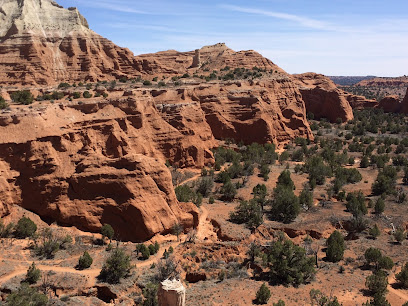
Grosvenor Arch
Discover the breathtaking beauty of Grosvenor Arch, a stunning natural formation in Utah's enchanting desert landscape, perfect for adventure and photography.
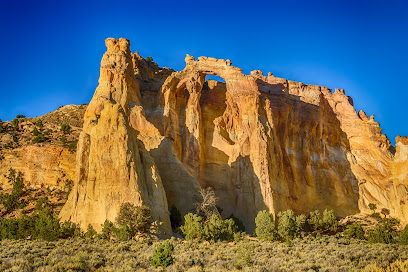
Peek-a-boo slot Canyon
Explore the mesmerizing beauty of Peek-a-boo Slot Canyon, a hidden gem in Utah perfect for hiking and photography enthusiasts.
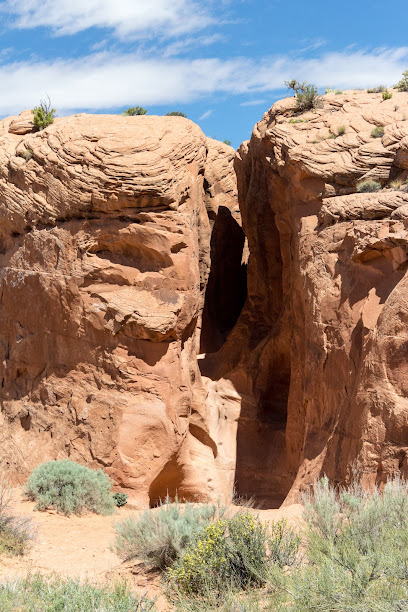
Devils Garden
Explore the breathtaking rock formations and natural beauty of Devils Garden in Utah, a must-visit destination for nature lovers and adventurers.
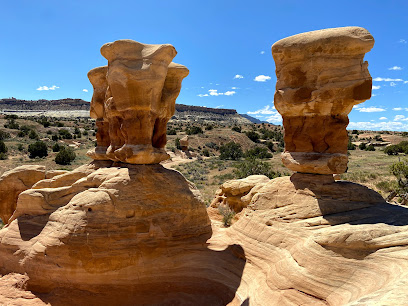
Escalante National Monument
Explore Escalante National Monument: A Stunning National Reserve Filled with Canyons, Unique Rock Formations, and Unforgettable Natural Beauty.
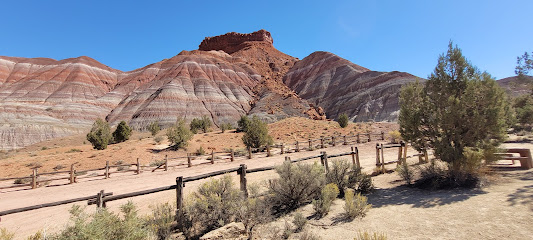
Grand Staircase Escalante Partners
Discover the natural beauty and cultural heritage of the Grand Staircase-Escalante National Monument through the Grand Staircase-Escalante Partners in Kanab, Utah.
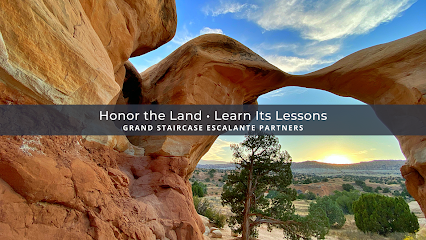
Visitor Information - Grand Staircase-Escalante National Monument
Explore the breathtaking landscapes and geological wonders of Grand Staircase-Escalante National Monument, a must-visit destination for nature lovers and adventurers.
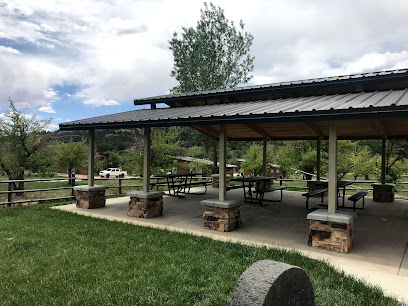
Grand Staircase-Escalante Partners
Explore the Grand Staircase-Escalante National Monument with insights from the Grand Staircase-Escalante Partners, your gateway to Utah's natural wonders.
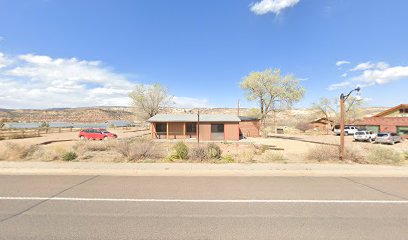
Unmissable attractions to see
Bryce Canyon National Park
Explore the breathtaking hoodoos and vibrant landscapes of Bryce Canyon National Park, a true natural wonder in Utah's stunning wilderness.
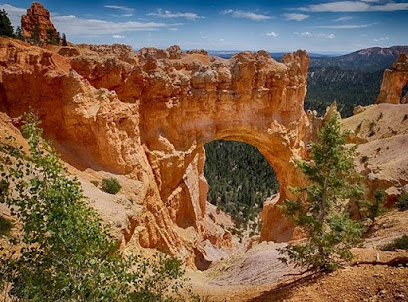
Bryce Canyon National Park Visitor Center
Explore the wonders of Bryce Canyon at the Visitor Center—your gateway to breathtaking landscapes and enriching experiences.
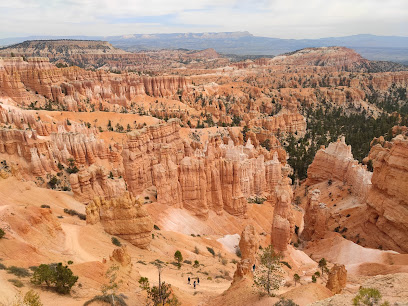
Capitol Reef National Park
Explore the breathtaking landscapes and rich history of Capitol Reef National Park, a stunning escape for nature lovers and adventure seekers in Utah.
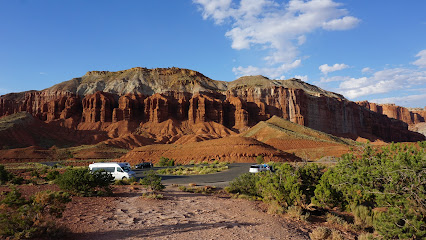
Bryce Canyon National Park Sunset Point
Experience the breathtaking views and unique geological wonders at Sunset Point in Bryce Canyon National Park, a must-visit for every traveler.
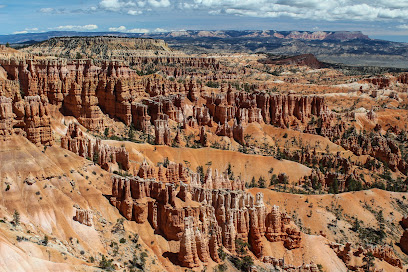
Kanab Visitor Center
Discover the Kanab Visitor Center: Your essential guide to Southern Utah's breathtaking landscapes and adventures.

Lower Calf Creek Falls
Explore the stunning Lower Calf Creek Falls, a natural wonder in Utah's Grand Staircase-Escalante National Monument, perfect for hiking and photography.
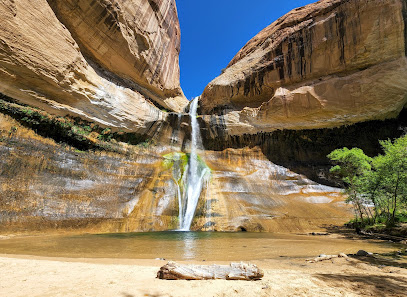
Toadstool Hoodoos Trailhead
Experience the captivating beauty of the Toadstool Hoodoos Trailhead, where surreal rock formations meet the serene landscapes of Utah.
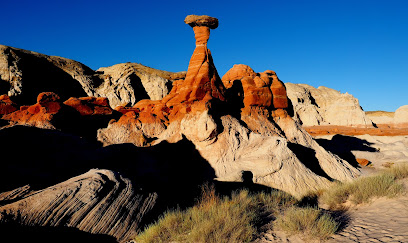
Wire Pass Trailhead
Discover the breathtaking landscapes of Wire Pass Trailhead in Kanab, Utah, where stunning canyons and unique geological formations await outdoor enthusiasts.
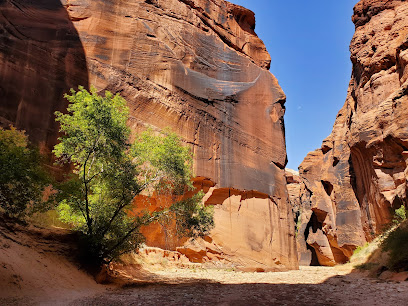
Red Canyon Arch
Discover the stunning natural beauty of Red Canyon Arch, a scenic spot that offers breathtaking views and unforgettable experiences in Utah's captivating landscapes.
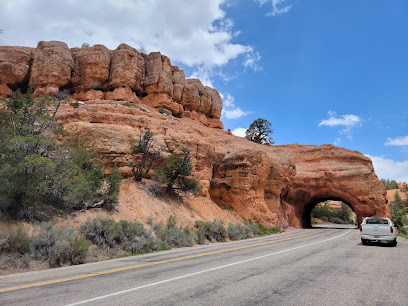
Anasazi State Park Museum
Explore the Anasazi State Park Museum, a captivating blend of history and nature in Boulder, Utah, celebrating the legacy of the Ancestral Puebloans.
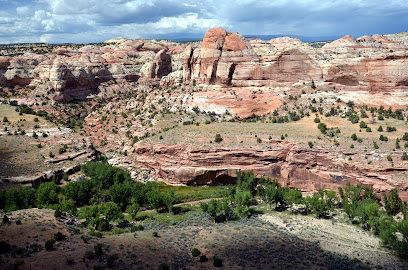
Sand Caves
Experience the enchanting Sand Caves of Kanab, Utah—a natural wonder with stunning sandstone formations and breathtaking views.
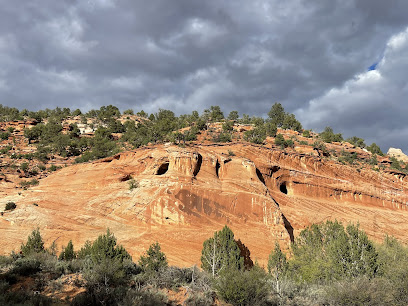
Hickman Natural Bridge
Explore the stunning Hickman Natural Bridge in Utah, a breathtaking natural arch surrounded by scenic trails and captivating landscapes.
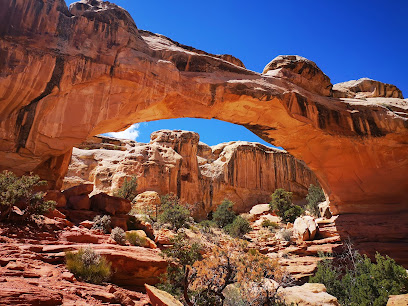
Red Canyon Slot (Peekaboo Kanab)
Discover the breathtaking beauty of Red Canyon Slot in Kanab, Utah - a stunning blend of adventure, hiking, and natural wonders.

Fairyland Point
Discover breathtaking views at Fairyland Point in Bryce Canyon National Park, where stunning rock formations and vibrant landscapes await.
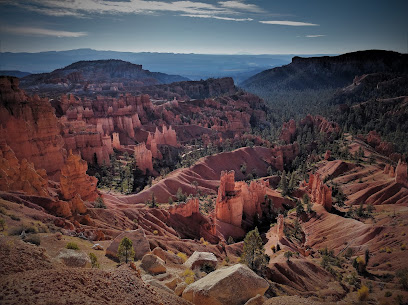
Willis Creek Slot Canyon trailhead
Explore the enchanting Willis Creek Slot Canyon in Kanab, Utah, where natural beauty and hiking adventure await every traveler.
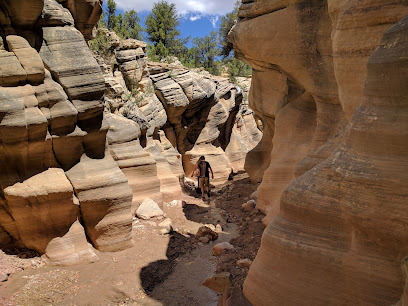
Markets, malls and hidden boutiques
Grand Staircase-Escalante National Monument
Discover the breathtaking landscapes and rich biodiversity of Grand Staircase-Escalante National Monument, a hidden gem in Utah's wilderness.
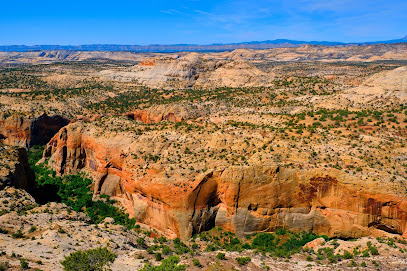
Ruby’s Inn General Store
Experience the best of Bryce Canyon City at Ruby’s Inn General Store, offering camping supplies, unique souvenirs, and local crafts for every traveler.
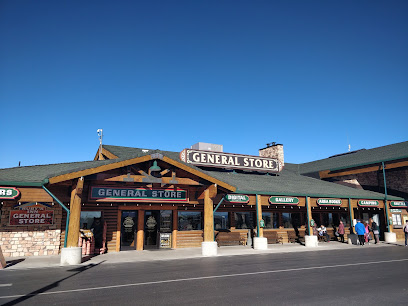
Escalante Outfitters
Experience the perfect blend of dining, lodging, and outdoor adventure at Escalante Outfitters in the heart of Utah's stunning landscapes.
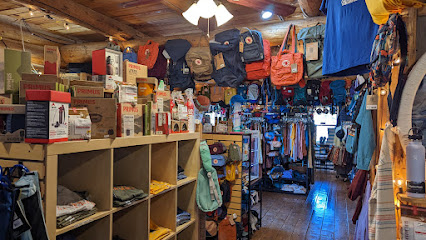
Escalante Petrified Forest State Park
Explore the unique geological marvels and ancient beauty of Escalante Petrified Forest State Park in Utah, a perfect destination for nature enthusiasts and history lovers.

Kiva Koffeehouse
Experience the unique charm of Kiva Koffeehouse, a premier coffee shop nestled in the stunning landscapes of Escalante, Utah.
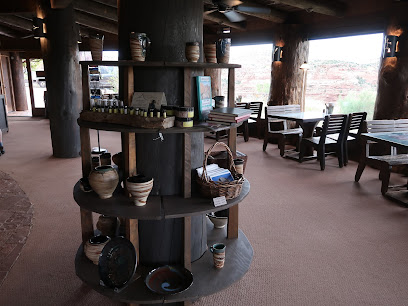
Ofland Escalante - formerly Yonder
Experience the perfect blend of luxury and nature at Ofland Escalante, a premier glamping retreat in the heart of Utah's stunning landscapes.
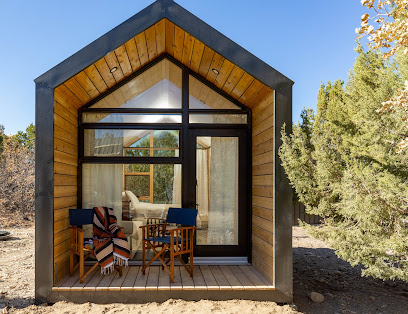
Escalante Cabins & RV Park
Experience the perfect blend of adventure and comfort at Escalante Cabins & RV Park, your gateway to Utah's stunning landscapes.

Grosvenor Arch
Explore the breathtaking Grosvenor Arch in Utah, a stunning natural sandstone formation surrounded by scenic desert landscapes.
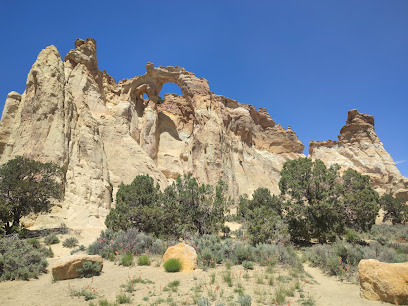
Peek-a-boo slot Canyon
Explore the breathtaking beauty of Peek-a-boo Slot Canyon in Utah, a stunning hiking area with unique rock formations and vibrant colors.
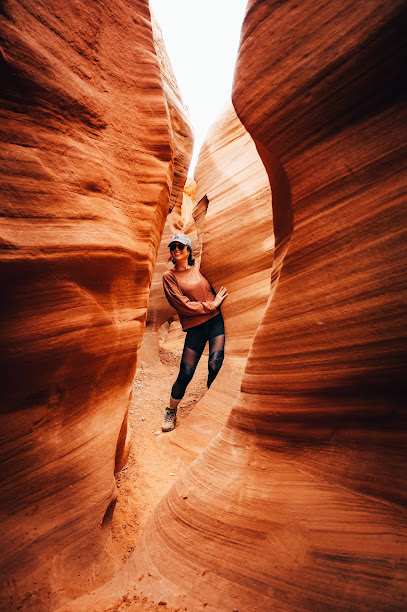
Clark's Country Market
Explore the flavors of Tropic, Utah at Clark's Country Market - a local grocery store filled with fresh produce, artisanal goods, and friendly service.
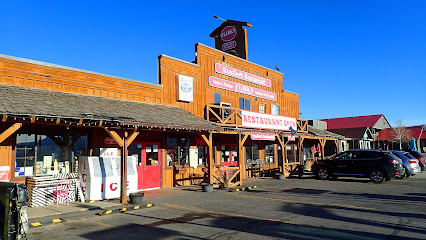
Escalante Mercantile
Explore the heart of Escalante at Escalante Mercantile, where local goods meet cozy café vibes for a unique experience.
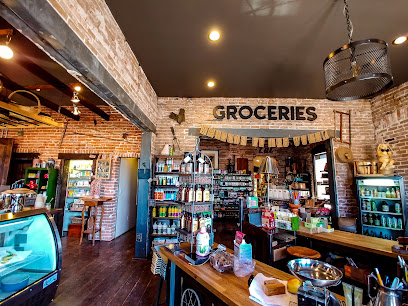
Griffin Grocery
Discover the heart of Escalante at Griffin Grocery, a local supermarket offering fresh produce and unique regional products.

North Campground General Store
Discover the North Campground General Store in Bryce Canyon: Your one-stop shop for essentials, snacks, and souvenirs amidst breathtaking landscapes.
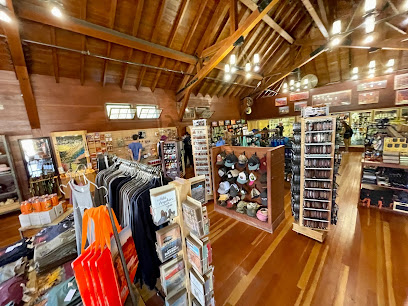
Utah Canyon Outdoors
Experience the ultimate outdoor adventure at Utah Canyon Outdoors, your go-to destination for gear and great coffee in Escalante, Utah.
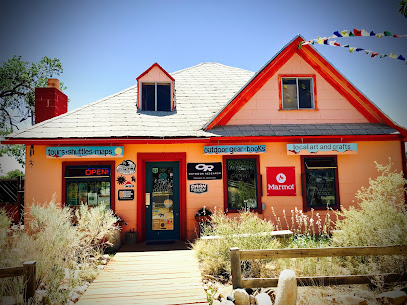
Bryce Canyon Rock Shop
Discover the fascinating world of geology at Bryce Canyon Rock Shop, your gateway to unique treasures and local craftsmanship in Utah.
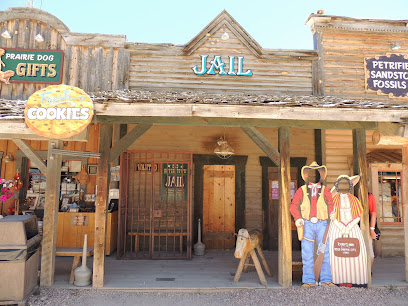
Essential bars & hidden hideouts
Escalante Outfitters
Discover Escalante Outfitters, your ultimate stop for food, gear, and local insights in the heart of Utah's stunning landscapes.
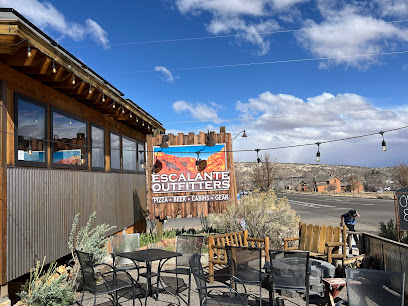
Hell's Backbone Grill & Farm
Discover the perfect blend of farm-fresh flavors and stunning views at Hell's Backbone Grill & Farm in Boulder, Utah.
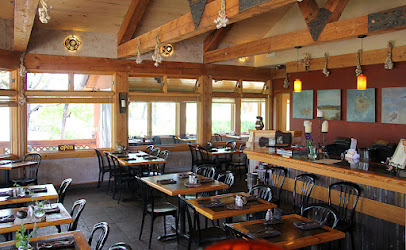
Kiva Koffeehouse
Discover the enchanting Kiva Koffeehouse in Escalante, Utah, where exceptional coffee meets breathtaking views in a serene atmosphere.
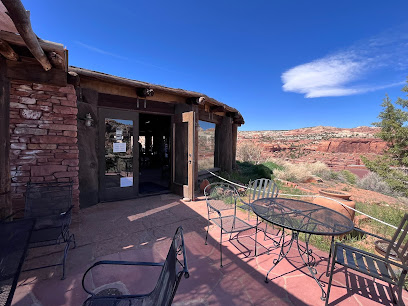
Circle D Restaurant
Experience the best of American cuisine at Circle D Restaurant in Escalante, where local flavors meet warm hospitality for an unforgettable dining experience.
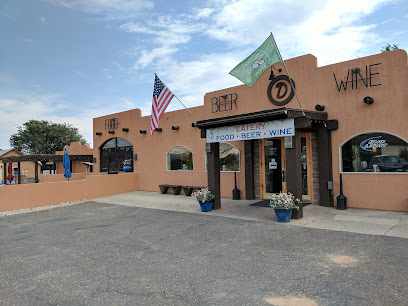
4th West Pub
Discover 4th West Pub in Escalante: a lively bar and grill with delicious food, refreshing drinks, and unforgettable entertainment.

Prospector Inn
Discover the charm of Escalante at the Prospector Inn, your cozy stay near breathtaking landscapes and outdoor adventures.
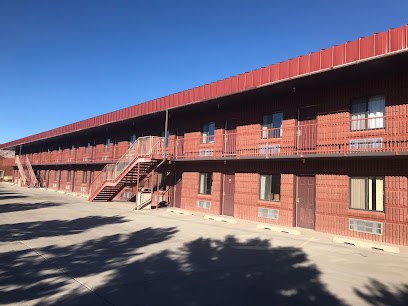
Cowboy Country Inn
Cowboy Country Inn in Escalante offers a cozy retreat with rustic charm, perfect for exploring Utah's breathtaking natural landscapes.

Circle D Motel
Discover comfort and adventure at Circle D Motel, your gateway to Escalante's natural wonders and outdoor escapades.
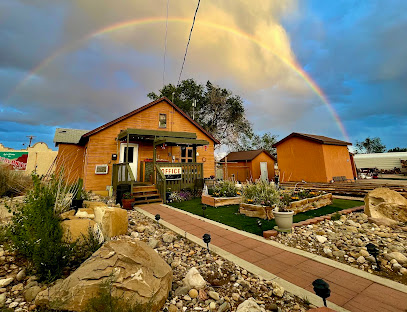
Slot Canyons Inn
Experience the serene charm of Slot Canyons Inn, your perfect retreat in Escalante, Utah, surrounded by breathtaking landscapes and outdoor adventures.

The Loubird Inn
Experience the charm and tranquility of The Loubird Inn, your perfect escape in Escalante, Utah, surrounded by breathtaking natural beauty.
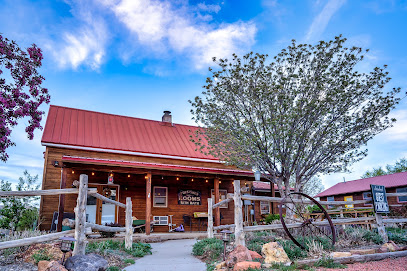
Subway
Experience fresh, delicious sandwiches at Subway in Escalante, Utah, a perfect stop for travelers exploring stunning landscapes.
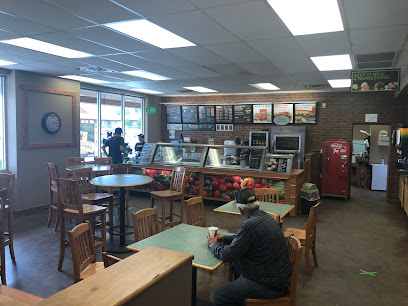
The INN of Escalante
Discover comfort and adventure at The INN of Escalante, the perfect base for exploring Utah's stunning natural landscapes.

Ponderosa Inn
Discover the serene comfort of Ponderosa Inn, your gateway to the breathtaking landscapes of Escalante, Utah, and the perfect retreat for adventure seekers.

Devils Garden
Experience the breathtaking beauty of Devils Garden in Utah, where stunning rock formations and scenic trails await nature lovers and adventure seekers alike.
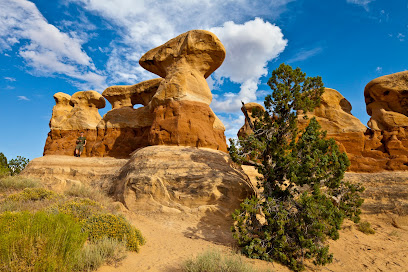
North Creek Grill
Explore the culinary delights of North Creek Grill in Escalante, Utah, where American flavors meet breathtaking scenery.

Local Phrases about Grand Staircase-Escalante National Monument
-
- HelloShiyo
[shee-yo] - GoodbyeWanishi
[wah-nee-shee] - YesHeh
[heh] - NoTah
[tah] - Please/You're welcomeAho
[ah-ho] - Thank youNah-tah
[nah-tah] - Excuse me/SorryS'oki
[soh-kee] - How are you?K'adokoh
[ka-doh-koh] - Fine. And you?Naat'áanii. Yaa
[nah-tah-nee. yah] - Do you speak English?Haa ałk'idaago tsiní?
[hah ahl-kee-dah-go tsee-nee?] - I don't understandDíí anííníshní
[dee ah-nee-nee-shnee]
- HelloShiyo
-
- I'd like to see the menu, pleaseMenu na'alkáágo yisdzoh
[meh-noo nah-ahl-kah-goh yis-dzoh] - I don't eat meatNaada'ííłt'éego bínaa'álí
[nah-dah-ee-lteh-eh-go bee-nah-ah-lee] - Cheers!Ahe'he'
[ah-hay-hay] - I would like to pay, pleaseBaa hózhǫ́
[bah hoh-zhon]
- I'd like to see the menu, pleaseMenu na'alkáágo yisdzoh
-
- Help!Yaa
[yah] - Go away!Dooleeł
[doh-lee-ehl] - Call the Police!Naayéé' neełni
[nah-yay-eh neh-lee] - Call a doctor!Binaa'áłtso
[bee-nah-ah-ltsoh] - I'm lostNaaltsoos biyiinaa
[nah-ahl-tsohs bee-yee-nah] - I'm illHóchxo'oo'
[hohch-shoh-oh]
- Help!Yaa
-
- I'd like to buy...Doo bik'ehgo
[doh bee-kay-hgoh] - I'm just lookingT'áá ákót'éego
[taa ah-koh-tay-eh-go] - How much is it?T'áá dóó
[taa doh] - That's too expensiveBaa dóó naashá
[bah doh nah-shah] - Can you lower the price?T'áá háádíní dóó naashá
[taa haa-dee-nee doh nah-shah]
- I'd like to buy...Doo bik'ehgo
-
- What time is it?T'áá háájií keehé
[taa haa-jee kah-hay] - It's one o'clockT'áá at'éé'
[taa ah-tay-eh] - Half past (10)Neezłí
[nee-zhlee] - MorningTaayáásh
[tah-yah-sh] - AfternoonHai
[high] - EveningYííh
[yeeh] - YesterdayYik'ehgo
[yee-kay-hgoh] - TodayJiik'ehgo
[jee-kay-hgoh] - TomorrowÁadoo
[ah-doh] - 1Bee
[bee] - 2Naaki
[nah-ah-kee] - 3Táá
[taa] - 4Dįį
[dee] - 5Ashdla'
[ash-dlah] - 6Hastiin
[hah-steehn] - 7Tseebíí
[tseh-bee] - 8Tsinii
[tsi-nee] - 9Baa
[bah] - 10Táh
[tah]
- What time is it?T'áá háájií keehé
-
- Where's a/the...?Haa'aah
[hah-ah-ah] - What's the address?Bik'ehgo yee dah
[bee-kay-hgoh yee dah] - Can you show me (on the map)?Dił hólǫ́
[deel hoh-lohn] - When's the next (bus)?Haa hólǫ́
[hah hoh-lohn] - A ticket (to ....)Hózhó bidaa
[hoh-zhon bee-dah]
- Where's a/the...?Haa'aah
History of Grand Staircase-Escalante National Monument
-
Long before European settlers arrived, the Grand Staircase-Escalante region was home to Native American tribes such as the Ancestral Puebloans and the Fremont culture. These early inhabitants left behind a rich tapestry of rock art, pottery, and cliff dwellings that still captivate visitors today. The rock art, consisting of petroglyphs and pictographs, provides invaluable insights into their daily lives, spiritual beliefs, and interactions with the environment.
-
In the 18th and 19th centuries, European explorers began to traverse the rugged landscapes of what is now Grand Staircase-Escalante National Monument. One of the most notable expeditions was led by John Wesley Powell in the late 1800s. Powell, a geologist and explorer, meticulously documented the area's unique geological formations and diverse ecosystems, contributing greatly to the scientific community's understanding of the region.
-
During the mid-19th century, Mormon pioneers began to settle in the region as part of their westward expansion. Towns like Escalante and Boulder were established, and the settlers undertook the arduous task of farming and ranching in this challenging environment. The Hole-in-the-Rock Expedition of 1879-1880 is a particularly remarkable story, where Mormon settlers carved a road through the seemingly impassable cliffs to reach the Colorado River.
-
On September 18, 1996, President Bill Clinton designated the Grand Staircase-Escalante National Monument under the authority of the Antiquities Act. This historic decision aimed to protect the area's unique geological features, archaeological sites, and diverse ecosystems. The monument covers nearly 1.9 million acres, making it one of the largest national monuments in the United States. The designation sparked both praise and controversy, highlighting the ongoing debate over land use and conservation in the American West.
-
The Grand Staircase-Escalante National Monument is a treasure trove for paleontologists. Since its designation, numerous significant fossil discoveries have been made, including new species of dinosaurs that roamed the region millions of years ago. These findings have provided critical insights into the prehistoric ecosystems that once existed here and have cemented the monument's status as a key site for scientific research.
Grand Staircase-Escalante National Monument Essentials
-
Grand Staircase-Escalante National Monument is located in southern Utah. The nearest major airports are McCarran International Airport in Las Vegas, Nevada (about 275 miles away), and Salt Lake City International Airport in Utah (about 300 miles away). From these airports, you can rent a car and drive to the monument. The best routes typically involve taking Interstate 15 and U.S. Route 89. Public transportation options are limited, so renting a car is highly recommended for flexibility and convenience.
-
Within Grand Staircase-Escalante National Monument, the primary mode of transportation is by car. The monument covers a vast area, and many roads are unpaved, so a high-clearance vehicle or a 4x4 is advisable. There are no public transportation options within the monument. Bicycling and hiking are popular for exploring specific trails and areas, but be prepared with sufficient supplies and a good map or GPS device.
-
The official currency in the United States is the US Dollar (USD). Credit cards are widely accepted in nearby towns such as Escalante, Boulder, and Kanab. However, it is advisable to carry some cash, especially if you plan to visit more remote areas where card payments might not be accepted. ATMs are available in the nearby towns.
-
Grand Staircase-Escalante National Monument is generally a safe destination for tourists. However, it is important to take standard precautions. Avoid hiking alone, inform someone about your plans, and carry sufficient water, food, and emergency supplies. Be aware of weather conditions and flash flood warnings, especially in narrow canyons. There are no specific areas with high crime rates targeting tourists, but always stay vigilant and secure your belongings.
-
In case of emergency, dial 911 for immediate assistance. Cell phone coverage can be unreliable within the monument, so it's important to have a plan. Carry a satellite phone or a personal locator beacon (PLB) for emergencies in remote areas. The nearest medical facilities are in the towns of Escalante, Panguitch, and Kanab. Having travel insurance that covers medical emergencies is highly recommended.
-
Fashion: Do wear comfortable and appropriate outdoor clothing, including sturdy hiking boots. Layering is advisable due to variable weather conditions. Religion: There are no specific religious customs to observe, but always be respectful of local traditions and natural sites. Public Transport: There is no public transport within the monument. Plan to rent a car for your visit. Greetings: Friendly greetings such as 'hello' or 'hi' are customary. Eating & Drinking: Do pack out all trash and food waste to keep the area pristine. Avoid leaving any food scraps that could attract wildlife.
-
To experience Grand Staircase-Escalante National Monument like a local, explore lesser-known trails such as the Peek-a-Boo and Spooky Gulch slot canyons. Visit the Escalante Petrified Forest State Park for a fascinating look at petrified wood and ancient fossils. Engage with local outfitters and guides who can offer insights and enhance your experience. Don't miss the opportunity to stargaze, as the area has some of the darkest skies in the United States, offering incredible views of the night sky.
Trending Landmarks in Grand Staircase-Escalante National Monument
Nearby Cities to Grand Staircase-Escalante National Monument
-
Things To Do in Bryce Canyon City
-
Things To Do in Page
-
Things To Do in Panguitch
-
Things To Do in Kanab
-
Things To Do in Torrey
-
Things To Do in Mt Carmel
-
Things To Do in Springdale
-
Things To Do in Beaver
-
Things To Do in Cedar City
-
Things To Do in Richfield
-
Things To Do in Grand Canyon Village
-
Things To Do in St. George
-
Things To Do in Blanding
-
Things To Do in Ephraim
-
Things To Do in Green River

